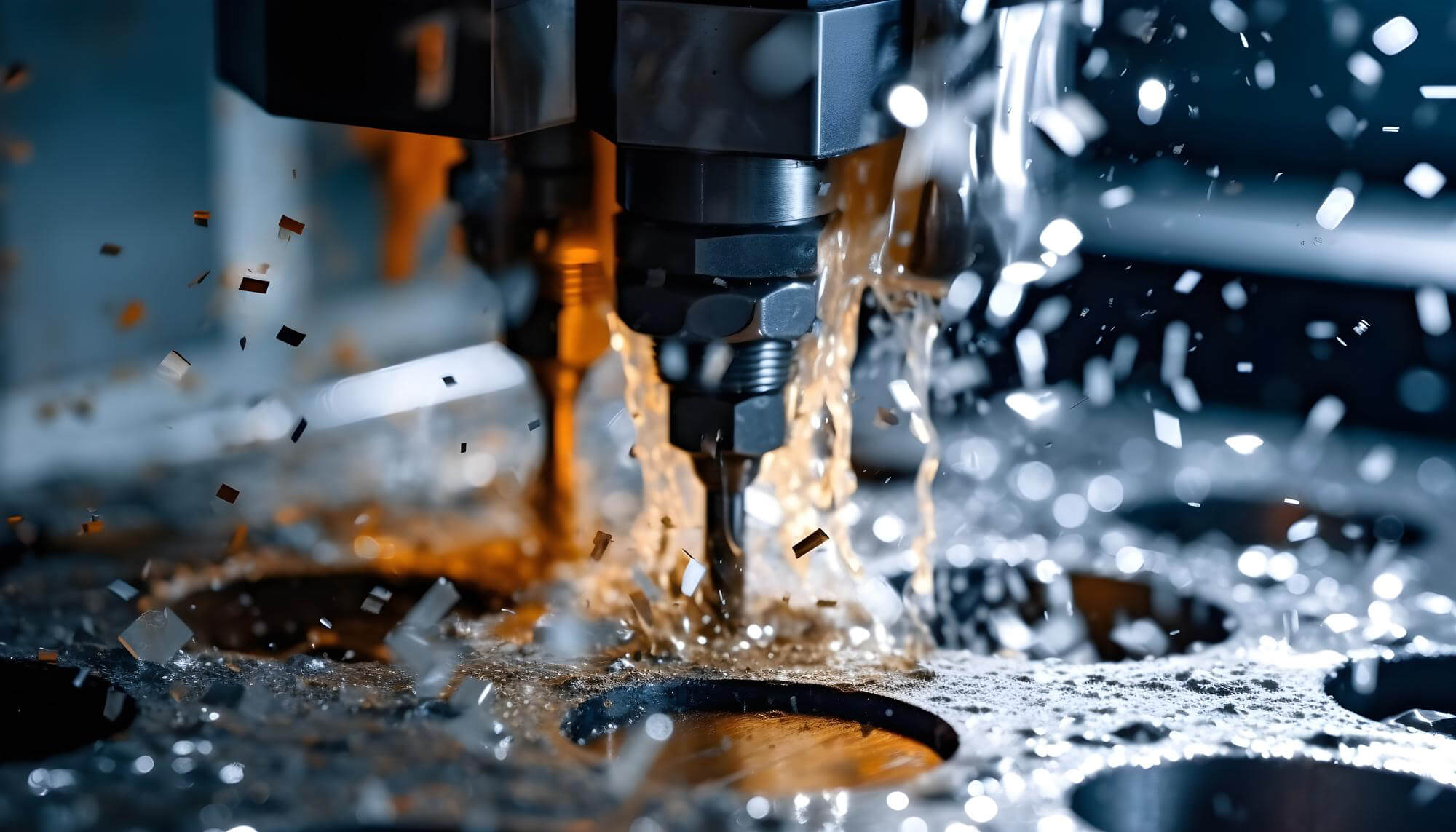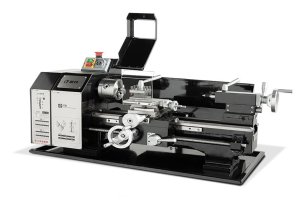When it comes to CNC machining, hole drilling and tapping are fundamental skills that every machinist needs to master. These operations might seem straightforward, but they require a good understanding of the tools, materials, and techniques to achieve precise and high-quality results. In this article, we will explore efficient techniques for drilling and tapping holes in CNC machining parts, providing you with practical insights and tips.
Understanding Hole Drilling
Drilling holes is a common task in CNC machining. The process involves using a rotating drill bit to create cylindrical holes in the workpiece. Here’s a step-by-step guide to mastering hole drilling:
1. Selecting the Right Drill Bit
The first step in drilling a hole is selecting the appropriate drill bit. Factors to consider include the material of the workpiece, the desired hole diameter, and the depth of the hole. For instance, high-speed steel (HSS) drill bits are suitable for general-purpose drilling, while carbide-tipped bits are ideal for harder materials.
2. Setting the Correct Speeds and Feeds
The spindle speed (RPM) and feed rate (IPM) are critical parameters in drilling. These settings depend on the material and the diameter of the drill bit. Generally, harder materials require lower speeds and feeds, while softer materials can be drilled at higher speeds. It’s essential to refer to the drill bit manufacturer’s recommendations for optimal settings.
3. Using Peck Drilling
Peck drilling is a technique used to reduce heat and improve chip evacuation when drilling deep holes. Instead of drilling the hole in one continuous pass, the drill bit is retracted periodically to break up chips and allow coolant to reach the cutting edge. This method helps prevent the drill bit from overheating and ensures a cleaner hole.
4. Ensuring Proper Coolant Flow
Coolant plays a vital role in drilling operations. It lubricates the cutting edge, reduces heat, and flushes away chips. Ensure that the coolant flow is directed at the cutting area and that the coolant type is suitable for the material being drilled.
5. Checking for Runout
Drill bit runout can lead to oversized or off-center holes. To check for runout, measure the distance from the drill bit to a fixed point while rotating the spindle by hand. If the runout exceeds the manufacturer’s tolerance, the drill bit or tool holder may need replacement.
Tapping Threads
Tapping is the process of cutting internal threads in a hole. It requires precision and care to ensure that the threads are clean and accurately formed. Here are some tips for efficient tapping:
1. Choosing the Right Tap
Taps come in various styles, including hand taps, spiral point taps, and spiral flute taps. The choice depends on the material and the type of thread being cut. For instance, spiral point taps are excellent for through holes, while spiral flute taps are better suited for blind holes.
2. Setting Proper Speeds and Feeds
Like drilling, tapping requires appropriate speeds and feeds. The spindle speed should be much lower than for drilling, and the feed rate must match the thread pitch. Using the correct settings helps prevent tap breakage and ensures clean threads.
3. Using Thread Cutting Oil
Thread cutting oil reduces friction and heat, making the tapping process smoother. Apply the oil generously to both the tap and the hole before starting the operation.
4. Clearing Chips
Chip buildup can cause the tap to bind and break. Periodically reverse the tap to break and clear chips from the flutes. This is especially important when tapping deep or blind holes.
5. Checking Thread Quality
After tapping, inspect the threads with a thread gauge to ensure they meet the required specifications. The threads should be smooth, free of burrs, and the correct size.
Combining Drilling and Tapping
For CNC machining parts that require both drilling and tapping, it’s efficient to combine these operations in a single setup. This approach minimizes tool changes and reduces cycle time. Here’s how to do it:
1. Using Combination Tools
Combination drill and tap tools can drill a hole and tap threads in one pass. These tools are designed to switch from drilling to tapping without changing the tool, making the process faster and more efficient.
2. Programming the CNC Machine
When programming the CNC machine, ensure that the drilling operation is followed by the tapping operation in the same toolpath. This sequence should be clearly defined in the G-code to avoid any confusion or errors.
3. Verifying Toolpath and Parameters
Before running the combined drilling and tapping operation, verify the toolpath and parameters on a sample workpiece. This step helps identify any issues with the setup and ensures that the final parts will meet quality standards.
Practical Example
Let’s consider an example of machining a threaded hole in a CNC part. The part requires a 7/16-14 UNC thread, which involves the following steps:
- Spot Drilling: Use a 90° spot drill to create a precise starting point for the drill bit.
- Drilling: Drill the hole using a 3/8″ drill bit, ensuring the depth is sufficient for the thread length.
- Chamfering: Use the spot drill to chamfer the hole entrance, preparing it for tapping.
- Tapping: Tap the threads using a 7/16-14 UNC tap with proper cutting oil.
By following these steps and the techniques discussed, you can efficiently drill and tap high-quality holes in your CNC machining parts.
Mastering hole drilling and tapping is crucial for producing precise and high-quality CNC machined parts. By selecting the right tools, setting proper speeds and feeds, and using techniques like peck drilling and chip clearing, you can achieve excellent results. Combining drilling and tapping operations further enhances efficiency, saving time and reducing tool wear. With these efficient techniques, you can tackle even the most challenging hole-making tasks in your CNC machining projects.
Other Articles You Might Enjoy
- Tapping Methods in CNC Machining
Classification and Characteristics of Tapping in CNC Machining Tapping, using taps to machine threaded holes, is the most commonly used method for creating threaded holes. It is mainly suitable for…
- Innovative CNC Machining for Advanced Wearable Technology
Innovative CNC Machining for Advanced Wearable Technology The advent of Computer Numerical Control (CNC) machining and wearable technology has transformed various industries, including healthcare, fitness, fashion, and defense. CNC machining…
- Maximizing Precision in CNC Machining: Techniques and Tips
Importance of Precision in CNC Machining Precision is an fundamental component in the field of Computer Numerical Control (CNC) machining. It entails producing parts that are not only accurate but…
- Precision CNC Machining of Steel: High-Volume Production
Precision CNC Machining and High-Volume Production As an integral part of modern manufacturing processes, Precision Computer Numerical Control (CNC) machining brings about unmatched accuracy and consistency in the production of…
- Optimizing CNC Machining Parts Using Constant Surface Speed Techniques
CNC machining, particularly on lathes, can be a complex process, but understanding and utilizing constant surface speed (CSS) techniques can simplify and enhance the efficiency of your operations. The key…
- Maximizing Precision in CNC Machining: Techniques and TipsPrecisionMaximizing Precision in CNC Machining: Techniques and Tips
Introduction to CNC Machining and Its Role in Precision Manufacturing CNC (Computer Numerical Control) machining is a pivotal technology in the field of precision manufacturing. This automated process controls machine…






